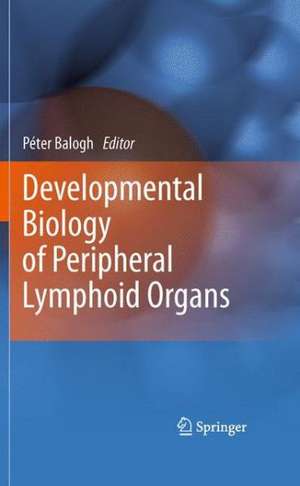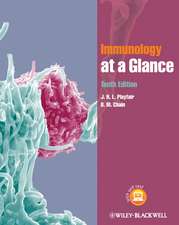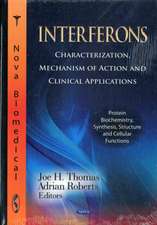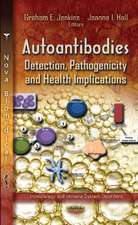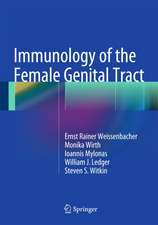Developmental Biology of Peripheral Lymphoid Organs
Editat de Peter Baloghen Limba Engleză Hardback – 4 noi 2010
| Toate formatele și edițiile | Preț | Express |
|---|---|---|
| Paperback (1) | 1088.39 lei 6-8 săpt. | |
| Springer Berlin, Heidelberg – oct 2014 | 1088.39 lei 6-8 săpt. | |
| Hardback (1) | 1093.52 lei 6-8 săpt. | |
| Springer Berlin, Heidelberg – 4 noi 2010 | 1093.52 lei 6-8 săpt. |
Preț: 1093.52 lei
Preț vechi: 1151.07 lei
-5% Nou
Puncte Express: 1640
Preț estimativ în valută:
209.24€ • 218.47$ • 173.18£
209.24€ • 218.47$ • 173.18£
Carte tipărită la comandă
Livrare economică 05-19 aprilie
Preluare comenzi: 021 569.72.76
Specificații
ISBN-13: 9783642144288
ISBN-10: 3642144284
Pagini: 188
Ilustrații: X, 177 p.
Dimensiuni: 155 x 235 x 17 mm
Greutate: 0.4 kg
Ediția:2011
Editura: Springer Berlin, Heidelberg
Colecția Springer
Locul publicării:Berlin, Heidelberg, Germany
ISBN-10: 3642144284
Pagini: 188
Ilustrații: X, 177 p.
Dimensiuni: 155 x 235 x 17 mm
Greutate: 0.4 kg
Ediția:2011
Editura: Springer Berlin, Heidelberg
Colecția Springer
Locul publicării:Berlin, Heidelberg, Germany
Public țintă
ResearchCuprins
Introduction: Evolution of peripheral lymphoid organs Common themes in lymphoid organ developmentCellular partners in the embryonic induction of lymphoid territories: origins and transcriptional regulation Lymphotoxin/TNF and related molecules as morphogenic factors NF-kB signaling and lymphoid organ Homeostatic chemokines, cytokines and their receptors in peripheral lymphoid organ development Development of lymph nodes in humans and rodentsCellular and molecular determinants of lymphatic system development: Programmed and inflammation-induced differentiation Development of lymph nodes in humans and mice Development of lymph node circulation and homing mechanism 4Programmed and nascent gut-associated organized lymphoid tissues. Development of Peyer’s patches Cryptopatches and Isolated Lymphoid Follicles: Aspects of development, homeostasis and function Single complexity: the spleenDevelopmental and structural characteristics of the spleen in humans and rodents Formation and maintenance of different lymphoid territories in spleen Age-associated decline in peripheral lymphoid organ functions
Textul de pe ultima copertă
The human immune system is a complex network of tissues and organs dispersed throughout the body. Immunology, as one of the most rapidly evolving fields in biomedical research, has to date covered the essential cellular and molecular events necessary for immune responses to occur, but has paid relatively little attention to important developmental processes underlying the formation of the tissues themselves that carry out immune responses in humans and other mammalians. In contrast to the thymus and bone marrow that generate mature leukocytes for antigen recognition and handling, these latter tissues display broad tissue distribution and possess diverse architectural characteristics. These peripheral lymphoid tissues and organs develop prior to the individual’s exposure to external antigens, and despite their similar functions, their varied appearances indicate a substantial complexity of tissue ontogeny. This volume presents a comprehensive overview of the developmental features of the major peripheral lymphoid organs, thus examining the connection between immunological functionality and structural characteristics utilizing a developmental approach, for an audience ranging from undergraduate students to senior researchers in immunology, histology and clinical medicine.
Caracteristici
For the first time provides a comprehensive source on the subject
Rapidly evolving field
Written by experts
Rapidly evolving field
Written by experts
